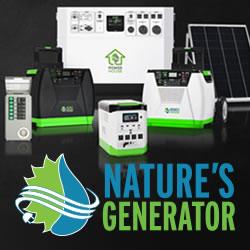Energy Affordability Was on the Ballot. Clean Energy as the Solution Won.
.jpg)
In the months leading up to Election Day on Tuesday, November 4, fast-rising electricity prices — and what to do about them — emerged as a priority issue for voters around the country.
Soon after the polls closed and the results came rolling in, it became clear that supporting solar and storage to lower costs is more than just good policy. It’s good politics, too.
In race after race, voters elected candidates who made lowering electricity costs through investing in solar and storage a central tenet of their messaging and policy platforms. And some candidates learned the hard way that if you shy away from solar and storage, voters will shy away from you.
In New Jersey, where electricity prices skyrocketed roughly 20% this summer, exit polls showed a whopping 87% of voters considered electricity costs to be a problem. Governor-elect Mikie Sherrill won by running on an energy affordability platform that includes many of SEIA’s suggested solutions to help lower prices: growing capacity by investing in cheap, quick-to-deploy solar; streamlining permitting to reduce energy projects’ soft costs that quickly add up; promoting community solar; and expanding battery storage. Sherrill also promised to declare a “state of emergency on energy costs.”
In Virginia — the data center capital of the world, where power prices have surged 13% in the past year — Governor-elect Abigail Spanberger and many candidates for the Virginia House of Delegates won decisive victories by embracing solar and storage to lower people’s bills. Spanberger’s energy affordability plan includes expanding and incentivizing solar development in certain places like brownfields, rooftops, parking lots, and public buildings; deploying more energy storage; implementing Virtual Power Plants to take better advantage of existing distributed energy resources; and reducing costs for consumers “by speeding up timelines to bring new projects online.”
A similar story occurred in the race for two of five seats on Georgia’s Public Service Commission, the board that regulates the state’s utility companies and the rates they charge for electricity. Challengers Peter Hubbard and Alicia Johnson ousted incumbents in landslide victories by focusing on the need to lower utility bills and invest in clean, reliable energy.
Rising energy prices will continue to resonate with voters as a major problem requiring serious solutions.
In 2026, we will see elections for 36 Governor’s seats, 35 U.S. Senate seats, and every single U.S. House district — and voters will continue to gravitate to candidates that offer a clear, pragmatic strategy to lower their electricity bills. Voters in nine states (Alabama, Arizona, Georgia, Louisiana, Montana, Nebraska, North Dakota, Oklahoma, and South Dakota) have the chance to decide on 14 commissioners to serve on their respective state utility commissions.
A recent Associated Press-NORC Center for Public Affairs Research poll found that 76% of U.S. adults are concerned about their electricity bills — with 36% saying these costs are “major” concern. Customers in the PJM power grid territory, which serves more than 65 million people across 13 states, will see another spike in their bills next June.
If this Administration continues to block solar and storage projects from adding affordable, reliable energy to the grid, and energy intensive data centers and AI continue to proliferate, Americans’ electric bills will continue to rise. And voters will continue to demand solutions to increase energy supply and drive down costs.
Voters’ preferred solution to address energy affordability is clear: building more solar and storage, the fastest and most affordable forms of energy to add to the grid.
Solar energy is a winner at the ballot box. All policymakers and candidates for office in 2026 would be wise to follow the blueprint laid out by this year’s winners and prioritize lowering people’s electricity bills by expanding solar and storage.
Comments (0)
This post does not have any comments. Be the first to leave a comment below.
Featured Product

